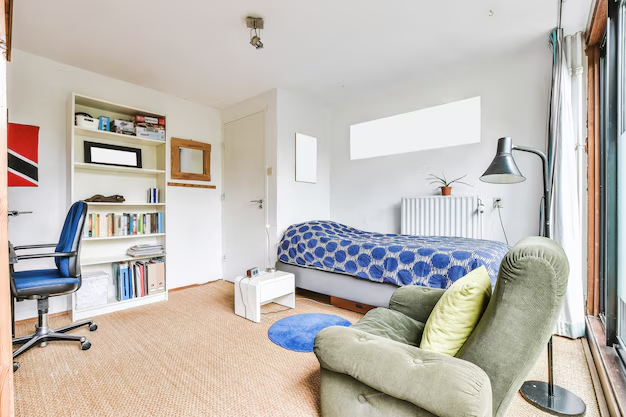Understanding the Size of a Studio Apartment: What You Need to Know
Imagine stepping into a cozy, efficient space where each square foot serves a purpose. That's the charm of a studio apartment. But what exactly does the size look like? Studio apartments vary widely, offering the essentials in a single living area. Let’s break down what you can expect from studio apartment dimensions and explore some financial strategies to help secure the perfect spot.
What is a Studio Apartment?
A studio apartment is a self-contained living unit featuring an open floor plan, seamlessly integrating living, sleeping, and cooking spaces. The size of a studio can differ based on location, design, and market conditions, but generally, they range from 300 to 600 square feet.
Key Characteristics of a Studio Apartment:
- Open Layout: Combines living, sleeping, and kitchen areas.
- Compact Facilities: Includes a small kitchenette or full kitchen, a bathroom, and sometimes a closet space.
- Flexible and Adaptive: Often requires creative use of space for storage and daily living.
How Big is a Typical Studio Apartment?
In urban areas, particularly in cities like New York or San Francisco, finding a 300 to 400 square foot studio is common due to limited space and high demand. In more suburban settings or less densely populated regions, studios can be larger, sometimes approaching 600 square feet.
Points to Consider:
- High-traffic Cities: Expect smaller sizes—typically on the narrow range.
- Affordable Living Costs: Generally, larger studios are found here, offering more living space and better layouts.
- Design and Layout: Clever use of space through built-in furniture and multi-functional pieces can make smaller studios feel larger.
Financial Strategies and Support for Studio Apartments
Renting or buying a studio apartment can be feasible with careful financial planning. Numerous assistance programs and options make living arrangements more accessible, allowing you to settle comfortably into your new home.
Financial Assistance Programs:
- Government Aid Programs: Such programs like HUD (Housing and Urban Development) offer rental assistance or subsidized housing for qualifying individuals.
- Educational Grants and Scholarships: Students can leverage grants to help cover living expenses, including accommodations.
- Debt Relief Options: Programs are available to consolidate or manage debt, freeing up funds for rental payments.
- Credit Card Solutions: Some credit cards offer rewards or cash back which can aid in managing monthly expenses.
Practical Tips for Securing a Studio Apartment:
- Budget Wisely: Evaluate your income and create a realistic budget including potential utility costs.
- Explore Educational Opportunities: For students, financial aid and scholarships can often be extended to cover living expenses.
- Understand Your Credit: A good credit score can lower the interest rates on loans and improve rental applications.
- Search Strategically: Utilize rental platforms and real estate agencies that specialize in studio apartments to find the best deals.
Helpful Financial Resources for Apartment Living 💡
- 🏡 HUD Housing Programs: Offers rental assistance and public housing options.
- 🎓 Student Educational Grants: Utilize federal aid for housing costs.
- 💳 Credit Card Benefits: Take advantage of rewards to reduce expenses.
- 📉 Debt Management Plans: Consolidate debt to improve financial stability.
- 🔍 Local and State Assistance Programs: Explore specific programs in your area for additional support.
Navigating the world of studio apartments can be both exciting and overwhelming. Armed with the right information and financial tools, you can find a space that suits your lifestyle without breaking the bank. Explore these resources and programs to make the most of your journey toward a cozy, efficient home.
